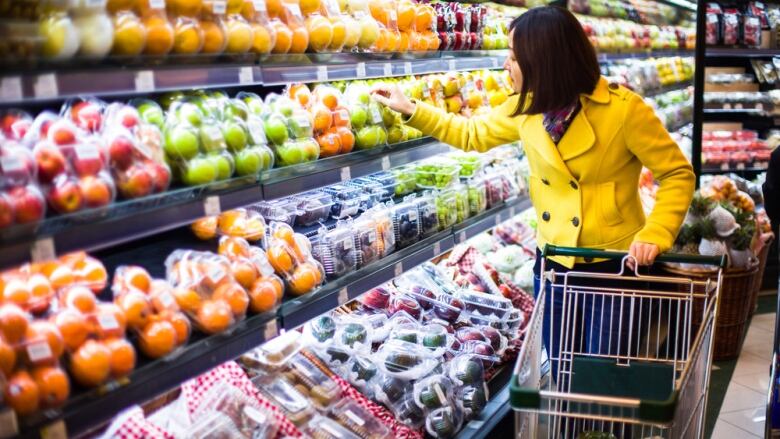Top 5 ways to save big bucks on groceries
Personal finance expert Kerry Taylor offers ways to save thousands of dollars on food each year
The average Canadian household spends around $6,000 a year on groceries, making that trip through the check-out aisle one of the highest household expenses — after housing, income taxes and transportation.
That grocery bill averaged $5,880 in 2014, the last year for which Statistics Canada data is available.
But what if we said you could cut that bill substantially? We went shopping with personal finance expert and blogger Kerry Taylor, who says a few simple changes in our shopping habits can net big savings.
"We get into a rut and we keep doing the same thing we've always done, or what we've learned from our parents," Taylor says.
"So by making a switch, switching to generics, shopping the perimeter, opening up the flyers, doing some meal planning, you're going to cut this cost by hundreds, maybe even thousands a year."
Thousands of dollars a year? It's true, she says. Here are Kerry's top five ways to cut down your grocery bill.
1. Shop in season
The great cauliflower crisis was a stark reminder that in a country like Canada, getting vegetables out of season can sometimes cost big bucks. So Taylor says it's critical to buy things when they're in season. Better yet, get a bunch and freeze them for later.
If you haven't planned ahead, don't worry, she says. Flash-frozen vegetables are cheap, and they maintain almost all their nutritional value.
For even more savings, buy your produce at discount grocery chains instead of higher-market stores.
"It's the exact same produce grade, the exact same everything — it's just 40 per cent less," says Taylor.

2. Work the perimeter
We all know the safest zone of any grocery store is the perimeter. Those middle aisles are stocked largely with chips, candy, cookies and other packaged foods. The best deals — and most nutritious foods — are along the edges.
Taylor says you can get most of what you need without making a foray into the middle.
"By opting to shop the perimeter first, you're going to spend your valuable money on higher-nutritional food," says Taylor.
3. Avoid brand names
You've heard it before, but opting for the generic over a brand name can save you all kinds of money — around 25 per cent, says Taylor.
And if the quality isn't what you were expecting, you can often get a refund, she says. "A lot of these products have a money-back guarantee."
4. Pay attention at the checkout
By the time most of us arrive at the check-out counter, we're usually primed for a quick exit. Taylor says this is where a cautious, eagle-eyed shopper can make a big difference to the bottom line — especially if a barcode is wrong.
Thanks to something called the Scanning Price Accuracy Code from the Retail Council of Canada, there are savings to be had when scanning mistakes are made. If an item under $10 is scanned with the incorrect price, it's free. "If it's over $10, you get $10 off," says Taylor.

Although the code is voluntary, "a lot of retailers adhere to it," says Taylor — yet few shoppers even know about it.
"Just say, 'Hey, I think that mis-scanned. I think that's free. Thank you.' Be polite, be Canadian," says Taylor.
5. Focus on price per unit
This is where the rubber really hits the road. Taylor regularly visits stores to compare prices for her blog. But she says, even within a single store, unit pricing can make a big difference. A unit price tells you what something costs at its smallest unit. For instance, how much toilet paper you are really getting in that 24-pack of Cottonelle compared to a 12-pack Scotties, or how two different brands of peanut butter in two different-sized jars really compare.
"It's not always the biggest box or the biggest jar that's best deal," she says. Just look on the price tag and see what the item costs per gram and compare away. But don't forget to bring your reading glasses — we're into the really fine print here.

Her last piece of advice is the one that all shoppers have likely learned the hard way: Don't go to the store hungry.


